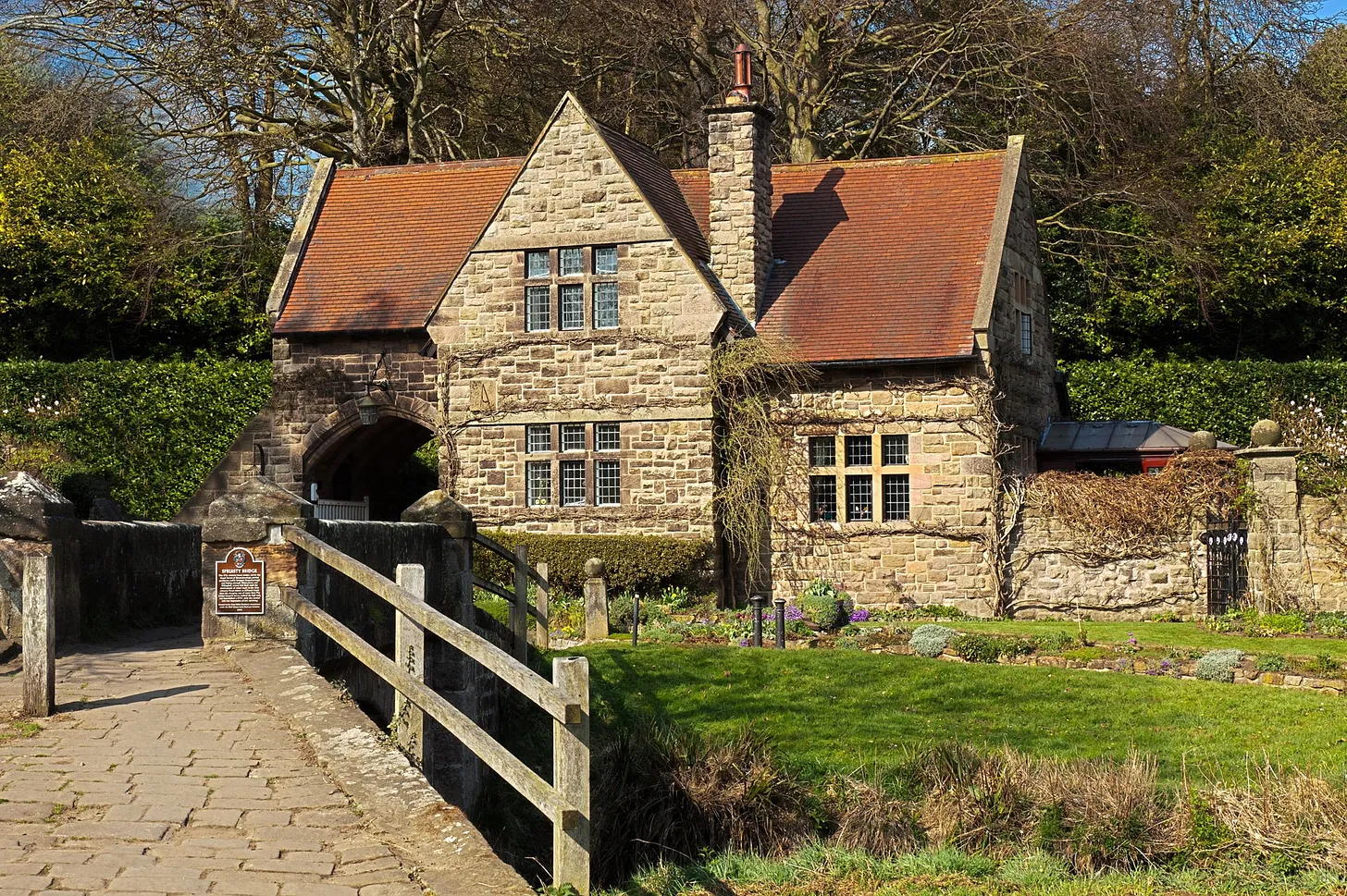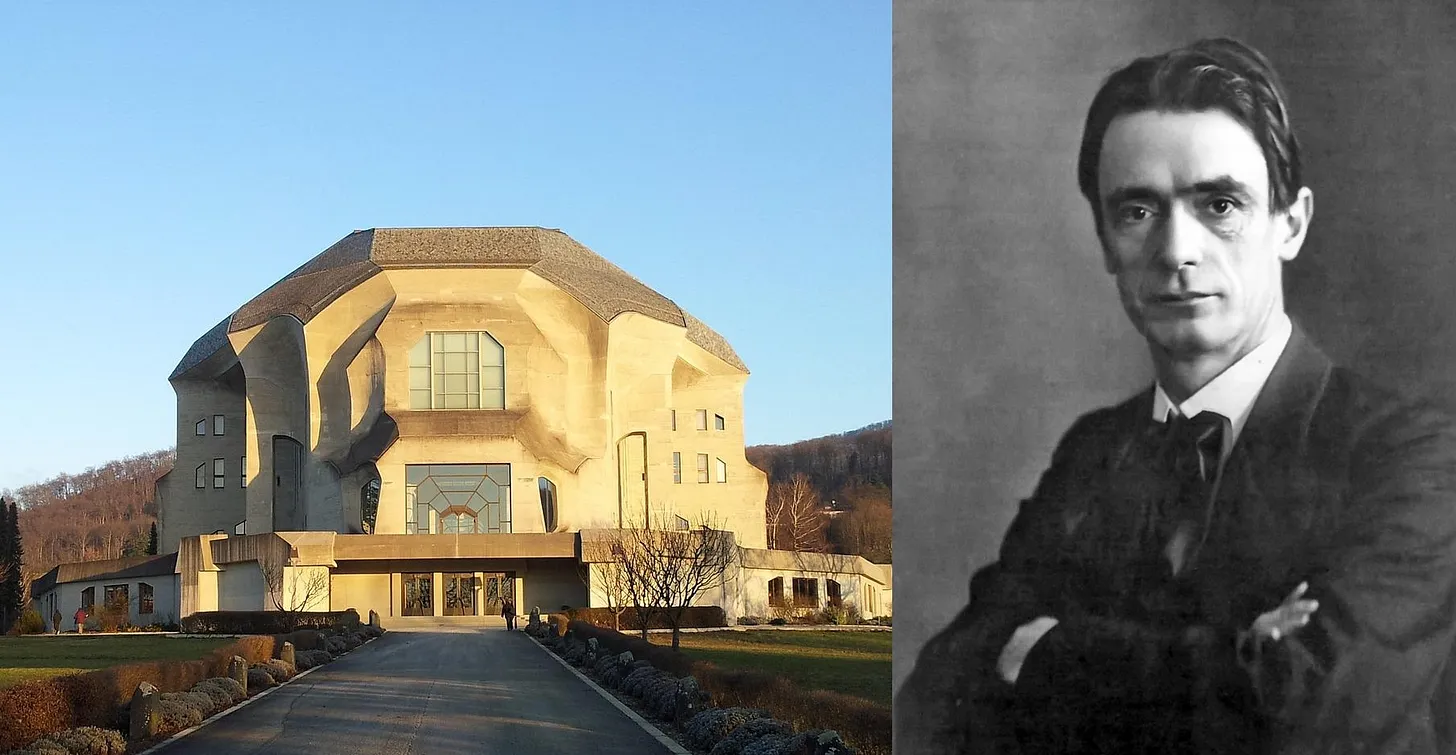Organic design vs aseptic design: The Hobbit vs Star Wars


What brought me to this subject was not so much an observation of human activities in this field, but rather my simple appreciation of the constructions and designs of certain universes, imaginary or not.
When one approaches the subject of synergetic design, one of the first reflexes is to think that copying nature is enough, that natural harmonies are already perfect in themselves and need no improvement. This is to forget two things:
it is impossible to prove (it is actually a sophism: argumentum ad naturam)
it is not because it is in accordance with nature that it will content us
In fact, the important thing is to carefully observe the effects of our lifestyles in all terms (immediate, short, medium, long and very long).
Only in this way can we judge the tree by its fruits.
Sure, nature often seems a good answer to most of our questions, but not always. Let's take the example of the splinter under the skin that triggers an infection. In most cases, animals will simply lick their infection and reduce the pain it causes by changing their gait or posture.
However, this does not seem to be the best solution, at least to healing and survival. The splinter should be removed, even if it means temporarily increasing the pain to better help healing later.
So, I was saying that it is from my own appreciation of the designs that this reflection came to me. Indeed, I can, and have since I was a child, appreciate both a very organic design inspired by the surrounding nature and an aseptic design, minimalist and geometric, sometimes coming from industrial places.
I find as much interest in hobbit houses as I do in the aseptic constructions of some scenes of Star Wars, in Coruscant for example.
This is even more interesting because the two designs are absolutely incompatible! One is presented as a continuation of nature to create a space of abundant life and where human activity is finally as close as possible to the wilderness that it carefully domesticates. Whereas the other seems to be the result of an aseptic and mathematical industrial culture, where all living things are compartmentalized and where wild nature has absolutely no place for itself, except outside the boundaries of those human and robotic places.
Nurturing duality
I soon realized that these radically opposed designs fed two very marked and antagonistic aspects in me.
The first one is the connection to nature, in a healthy, harmonious way, in a permanent search for balance, care and contemplation. It is an inner dynamic above all, which reflects before acting, which seeks its place in the universe, which wishes to create without destroying too much and to be conscious above all of what it is and of its own impact on what it is not.
The second is an instinct for aesthetic satisfaction with no other justification than to realize oneself. It is a very external dynamic, proactive, uncompromising, with no sensitive consideration other than satisfying the senses and a taste for order, logic, function, cleanliness, silence, smoothness and predictability. It does not question anything, it builds and affirms.
A good way to take stock of one's own needs and feelings towards nature is to live there for a while, without any advanced form of civilization. A tent and a stove are enough.
Many of us, and I don't think this is a fault, have a clear time limit beyond which we suffer in staying in such close contact with nature.
Some people crack after one day, I think it's a sign of city neurosis, but for me I can start to get fed up after 3 weeks.
In nature, dirt is everywhere, smells are often strong, there is noise all the time, even at night, it can be very cold or very hot, you can hurt yourself on a stone, have trouble climbing a hill, etc.
Nature is not comfortable.
Of course, we know that too much comfort is detrimental to life and that for life to flourish, it needs a minimum of stress. This allows it to redefine itself, to develop strategies and mechanisms of defense and adaptation. Some experiments even showed that it increases the life expectancy of mices to be slightly stressed during their lives.
In psychology, we talk about leaving our comfort zone and this is indeed healthy to a certain extent.
On the other hand, stubbornly staying away from any form of comfort can make one crazy, sometimes austere, continually unstable and temperamental.
Again, the middle ground seems ideal.
Also, and this is something related to contentment, there are designs that I personnally don’t want to lose. To reduce their negative impact on environment and humans, sure, I agree, maybe lower the number of such places, why not. But what some of them trigger in me as sense of beauty and greatness convince me to not reject everything coming from that world, on the contrary, better we find another path to make it happen and last, and evolve.
Building healthy and satisfy our tastes
As some of you may have gathered, I am hypersensitive by nature (and have a clear tendency to hyperacusis).
Some environments are extremely aggressive to me and while I think some of them are to many people without them particularly noticing, to me they can be quite violent.
So I need places of rest, order and contemplation that tend towards asepsis, silence and geometric harmony, like an ancient temple for example, a cathedral.
And I also appreciate places of work, of powerful machines or people, where demonstrations of force and skills are undeniable, like a factory, an industrial port, a train station, an airport or a gymnasium, a pool, a stadium, even a warship!
It is a way for me to calm my mind and devote myself to meditation, contemplation, reflection, or a way to work really well, and intensely, where I feel a deep sentiment of aesthetic contentment and wonder.
However, I know that I can't swear by this model exclusively, because it creates too brutal a boundary with the environment. Absolute separation is not the solution and doctors know this when it comes to immunity: contact with nature, pathogens and living aggressions stimulates our immune system and improves our health. But after a certain threshold, the opposite effect occurs: the pathogens become dangerous and the stress goes from a timely stimulation to a destructive attack.
Two types of designs therefore seem appropriate for us humans. And for me, the choice is made: I want an organic domestic and family space (like a hobbit house) and an industrial workspace (like a Star Wars hangar).
Many people probably won't go that far in terms of extremes, but it's a safe bet that this sentiment is widely shared. Another observation I've made on this topic is that the need for clean, geometrically designed space is much stronger among men than women. This probably speaks to our gendered inner dimension and its natural and cultural aspirations.
Building considerations and visual examples
Organic design
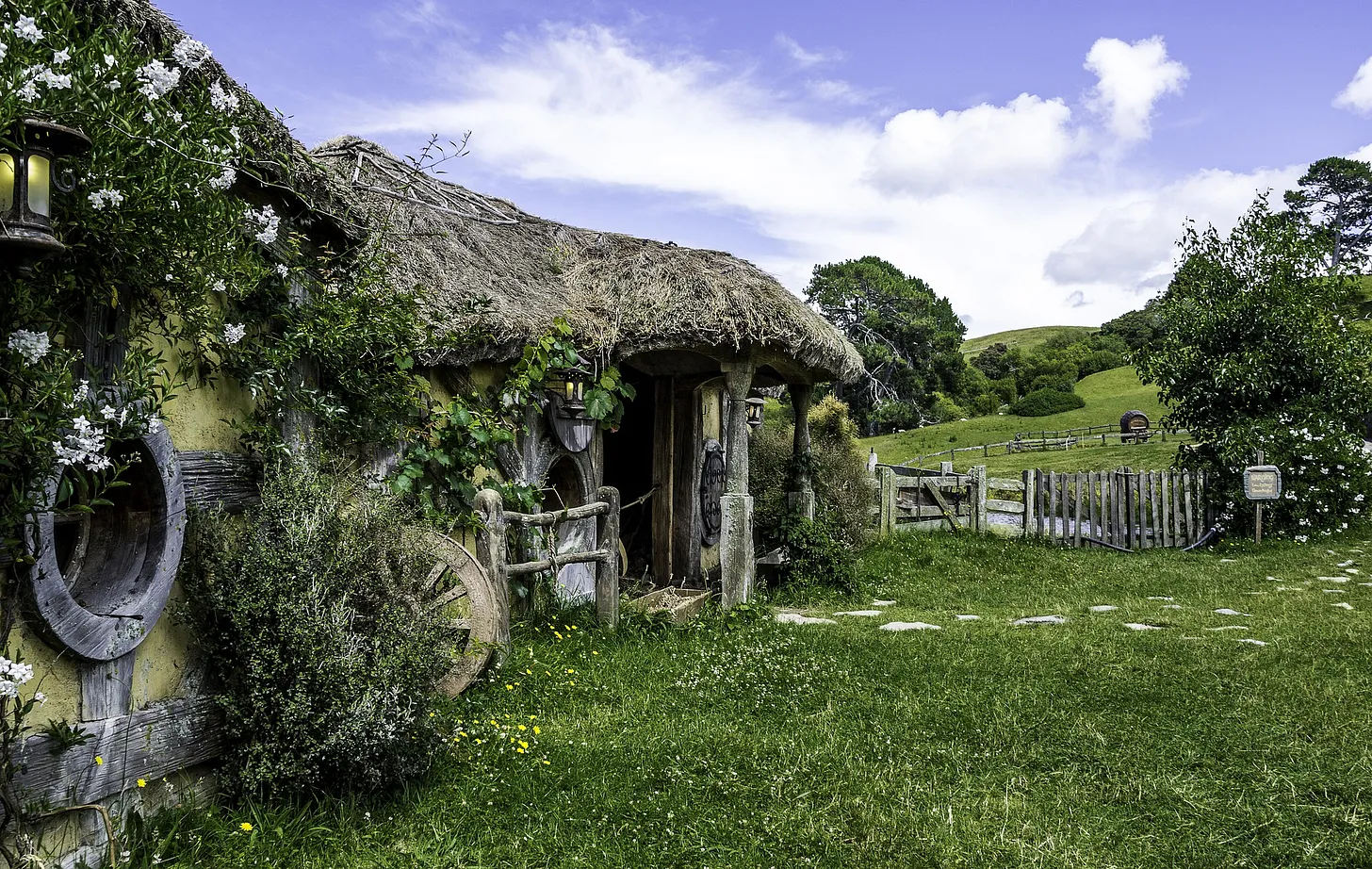
It's easy enough to lay the foundation for an organically inspired construction. The materials used are fairly expected:
earth
straw
wood
stone
glass
some metal (optional)
These materials are for the most part easy to produce, transform, install and recycle. They are abundant and can easily be reincorporated into nature's material flows.
An "organic house" follows the shape of the landscape to a certain extent and is built without necessarily having to resort to other materials than the previous ones.
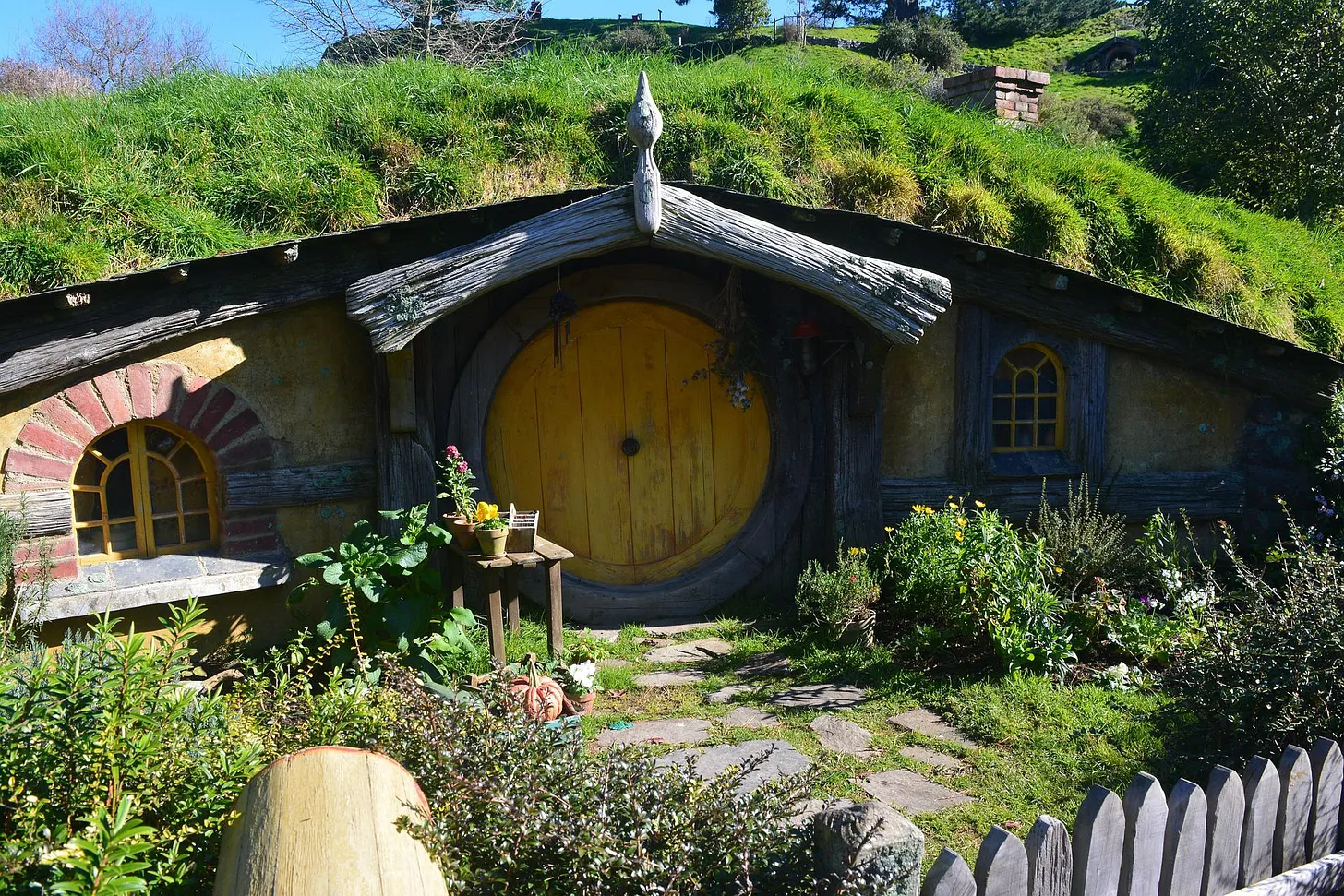
There is a lot of literature on the subject and it is not the purpose of this article to be exhaustive on this point.
The important thing is to carefully integrate the relevant information between the sourcing of materials, their transformation and their use in order to achieve the healthiest and most sustainable buildings possible (it is not necessarily very pleasant to constantly repair one's house, although there may be people who enjoy it...).
The metal parts will generally be the pipes, the electric wires and some small objects like locks, hinges, cutlery, etc.
Aseptic design
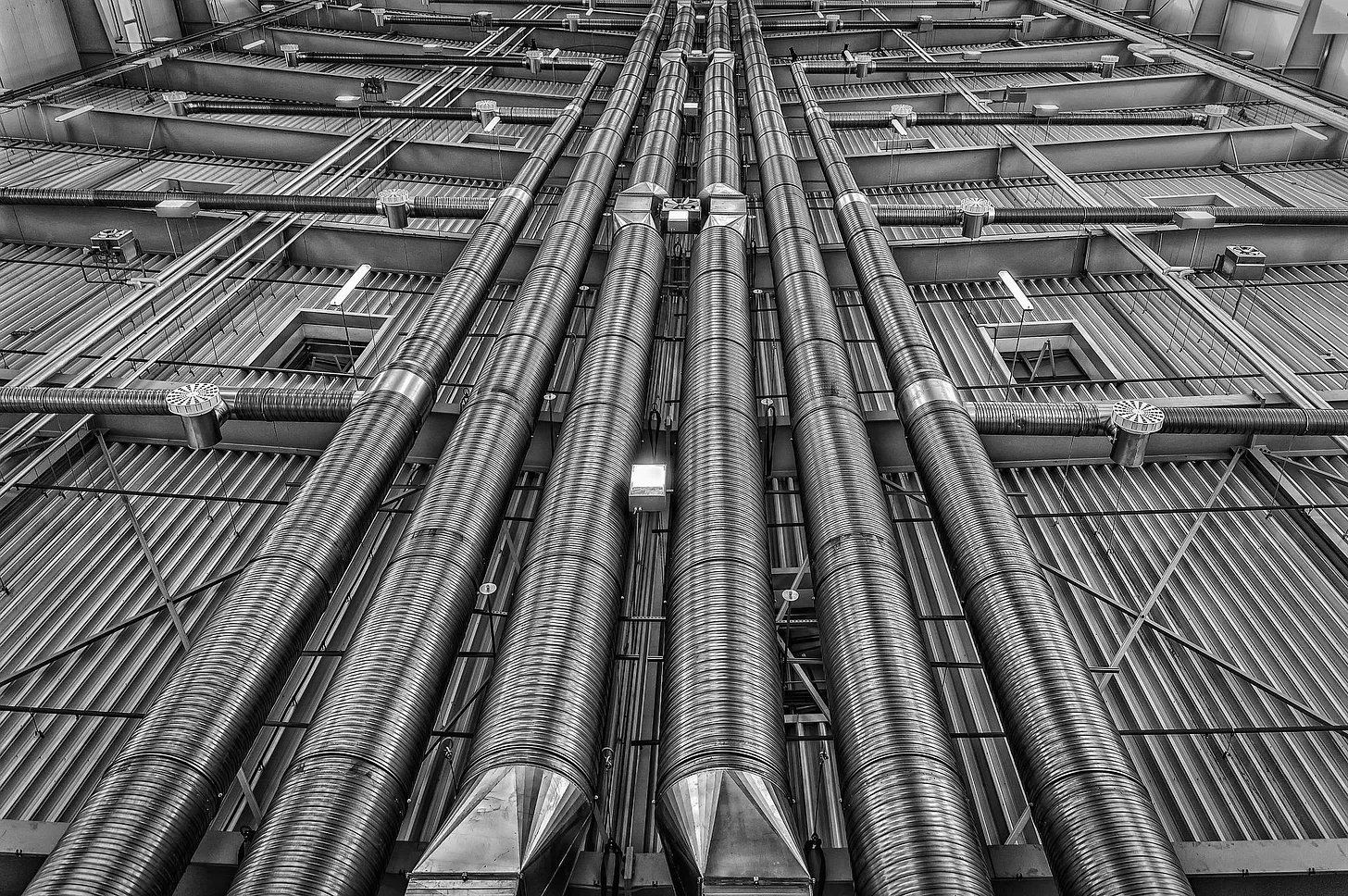
The issue of aseptic buildings, on the other hand, is much more complex. These structures typically use metal and concrete in abundance, asphalt also and sometimes large glass and petroleum derivatives.
However, these materials are generally not very synergetic, in the sense that we define it:
the energy cost of production in relation to the durability of the material is unsatisfactory for concrete, most plastics and bitumen,
the sand used for concrete is less and less available on Earth,
the longevity of concrete and bitumen is difficult to anticipate
except for metal, the maintenance of these materials is quite expensive
metal has a significant electromagnetic impact on our environment, sometimes amplifying and concentrating artificial waves in a dangerous way
concrete, bitumen and plastics cannot be reused or easily degraded by nature without generating local or global pollution
bitumen and plastics pollute runoff water
the fumes from synthetic rubber, some plastics, bitumen and some concretes are slightly toxic
the odors of these materials can be difficult to tolerate for some people

So how can we reconcile our taste for sleek, industrial, geometric designs without using non-synergetic materials?
Some compromises will certainly have to be made but here is what my research and discoveries have allowed me to note:
some natural materials like wood and stone can be worked to support a minimalist and relatively sanitized geometric design (I personally have a soft spot for some Japanese buildings)
concrete and asphalt exist in more acceptable and healthier forms, however more expensive to produce at the moment. It is also possible to replace them in some cases by materials derived from earth and wood (but not always)
metal structures should be designed with reuse in mind, anything built should be able to be disassembled and reused, rearranged
if human activities become more coherent and synergetic, aseptic places could be smaller and rarer, limiting their negative impacts on life while providing aesthetically inspiring and soothing places for many of us. Their use would also be potentially modified since the tools used and the needs of the objects produced would be different.

Traditional design
Halfway through these models, many will certainly find satisfaction in more traditional habitats, homes that are both made of minimally processed natural materials and yet conducive to a comfortable domestic space where the afflictions of nature are tempered (this is currently my case).
Let us pay attention, however, to how we build these houses as well, as they are often not optimized. The article on rainwater can convince you of this.
Moreover, technologies evolve and what was valid a century ago is not necessarily valid today. I will take the time in other articles to give you information on innovations of this kind. We can now build really synergetic houses where it is good to live and where nature is respected.
